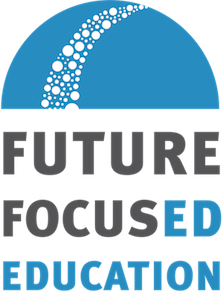How “Assessment” Became a Dirty Word, Part 1
By Paul K. Leather | Director, 4 State Performance Assessment Project, National Center for Innovation In Education | June 10, 2019
Why has state testing become such an anathema in today’s schools? The rise of mandated state assessments was born out of the desire to make schools more accountable. But, as the Washington Post reports, many states are suspending high-stakes tests like PARCC. New Mexico and New Jersey were among the first, but won’t be the last.
In 1983, the report A Nation At Risk found the U.S. was falling behind in a race more precious than most—the skills and talents of the American worker were failing to compete with the very best internationally.
The Children Left Behind
Out of the national hub-bub that followed, the Standards Movement was enshrined into law in 2002, when President George W. Bush signed the No Child Left Behind Act (NCLB). An effort to raise standards for all, and to close educational gaps for the least fortunate, NCLB sought to hold every student, every teacher, and every school to the same set of high standards measured by their specific state test.
What resulted was that students in reasonably well-off communities where parents were able to invest time and money to support their students’ education did reasonably well on the test. Meanwhile, in lower income cities and towns, with more single-parent families with fewer resources, children performed poorly. School improvement became the mantra, consultants were hired, curricula was adopted, interim tests put in place.
A teacher in these poorer performing schools came to no longer recognize her classroom. It was made clear that she would be placed on a teaching regimen that was not her own. Pacing guides in classrooms became mandatory, regardless of evidence of student learning.
The Fallout
The results were predictable. Curricula narrowed, perniciously, to those subjects that were covered on the test, mainly the three R’s—reading, writing, and ‘rithmatic. Science and technology, arts and music, civics and history, along with many other subjects, were offered less frequently or dropped completely.
Teachers struggled to push their students to do better on “the test”—the anxiety-inducing, once-a-year trial—where students filled out bubble sheets for hours, sitting in rows, often in the gymnasium until the bell rang. Since curricula and instructional methods in most states were local decisions, state tests were designed to be agnostic of curricula and instruction. This meant that for a teacher to prepare a student to do well, he needed to “teach to the test.” And so in many of our nation’s classrooms these new teaching regimens came to be known as “drill and kill”.
And yet, because of the inherent inequity of opportunity in schools, relative performance rarely changed, and test results continued to follow essentially the socio-economic status of the community. Not surprisingly, this circumstance was exacerbated by lists of “best places to live” by the likes of U.S. News & World Report, Niche, and SchoolDigger, looking to provide data for those seeking new homes. Property values slowly rose or fell with the test results, doubling down on the direct correlation of test results to socio-economic conditions.
Over time, except in a few places, even the most ardent school improvement initiatives failed to lift test scores significantly. Consequently, the U.S. continues to fall behind leading countries in academic K-12 performance by nearly every measure, more than 15 years after the passage of NCLB.
A Way Out
What if there was another way, as Governor Lujan has ordered? Another way to both measure student growth and performance, as well as to support deeper, richer teaching practices?
At the National Center for Innovation In Education, we’re convening Future Focused and the New Mexico Public Education Department along with seven other states to chart a new course for the future of assessment. And we’re not alone. A number of educational leaders across the country believe there is another way, and the most recent reauthorization of the federal K-12 education legislation, the Every Student Succeeds Act (ESSA), has created options for states to systematically try other approaches.
Stay tuned for part two where I’ll explore these new options.
Paul Leather is the Director of the State Level Performance Assessment Learning Community, a project of the National Center for Innovation In Education. Leather has served as Deputy Commissioner of Education in New Hampshire, and led the development of the New Hampshire Performance Assessment of Competency Education, NH PACE, a federally approved pilot that served as a precursor to the ESSA Innovative Assessment and Accountability Demonstration provision.


